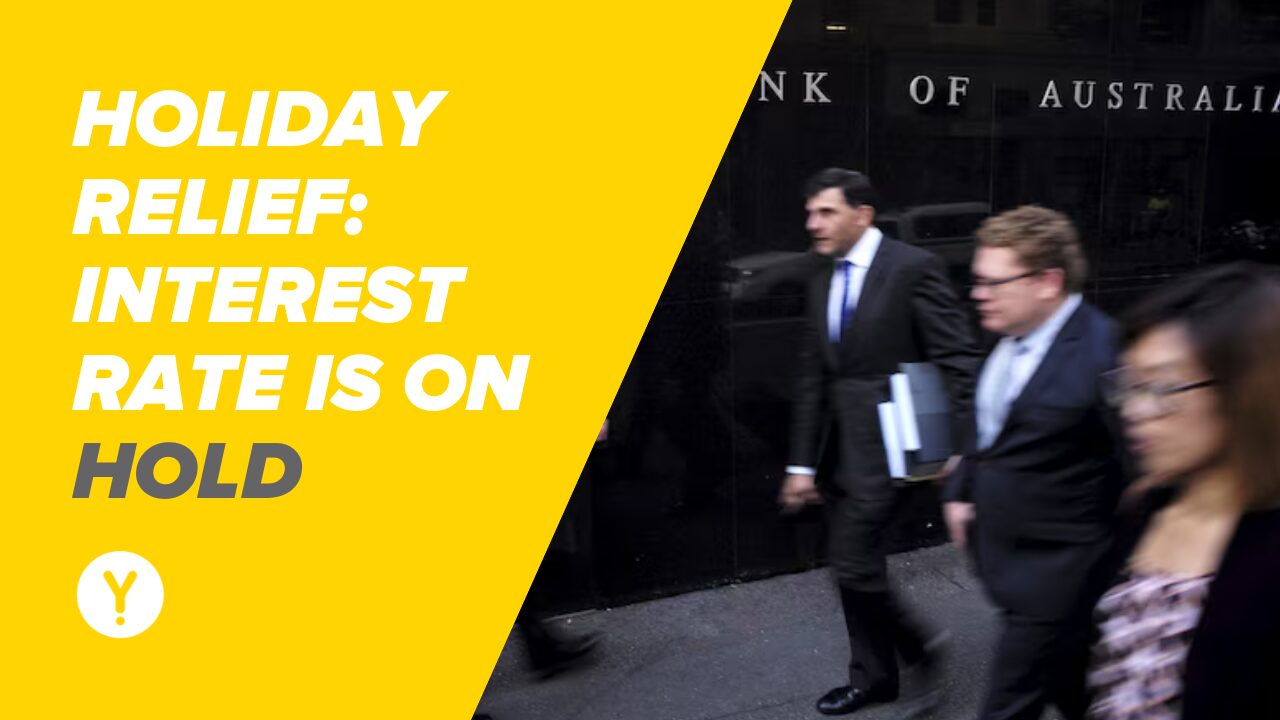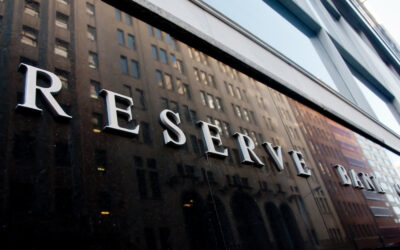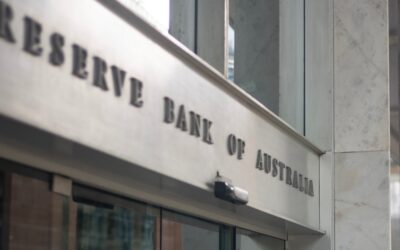In this article:

It’s not quite the ‘early Christmas gift’ from the RBA Governor, but it is some welcome relief before the holidays: Michele Bullock and the RBA board have decided to hold the official cash rate at 4.35% in the final board meeting of 2023.
With the cash rate already at the highest level since 2011, many experts were predicting a pause, as the effects of the rate hiking cycle are being felt.
What did Bullock say?
In a press release announcing the Board’s decision, Bullock first sought to justify last month’s rate rise by saying the November hike “reflected the Board’s view that progress in bringing inflation back to the target range of 2 to 3 per cent was looking slower than earlier forecast.”
Bullock alluded to underlying inflation remaining higher than expected, house prices rising and the number of new mortgages also increasing as justification for the hike: “The Board judged that the risk of inflation remaining higher for longer had risen and an increase in interest rates was therefore warranted to be more assured that inflation would return to target in a reasonable timeframe.”
Turning to this month’s decision, Bullock regurgitated much of the same that we’ve seen in recent months: The RBA will do whatever it takes to return inflation to the target range…
“Higher interest rates are working to establish a more sustainable balance between aggregate supply and demand in the economy,” said Bullock.
“The impact of the more recent rate rises, including last month’s, will continue to flow through the economy. High inflation is weighing on people’s real incomes and household consumption growth is weak, as is dwelling investment. Holding the cash rate steady at this meeting will allow time to assess the impact of the increases in interest rates on demand, inflation and the labour market.”
Today’s decision comes just a week after Bullock created headlines for stating that Australian households were “doing fine” despite the record increase in interest rates.
Speaking at an overseas conference in November, Bullock said: “We have, like other countries, raised interest rates much more quickly than we have in the past, and that has created, in fact, a lot of political noise and a lot of noise from the general public,” she said.
“People are very unhappy. But what I’d like to highlight here is though, despite that noise, households and businesses in Australia are actually in a pretty good position. Their balance sheets are pretty good.”
“Those who are coming off very low fixed rate mortgages, they’re managing quite well,” she said.
“And all the indications from the banks, and all we hear from the banks, is these households are doing fine.”
Speaking on the Property Insights podcast, Mark Bouris and Stephen Koukoulas did not react kindly to the suggestions that households are managing.
“I presume her field agents have told her this: whilst Australians with mortgages are unhappy with the Reserve Bank putting interest rates up (which is a no brainer), they are coping quite well. Now, that’s not what I’m hearing. And I’m exposed to half a million borrowers. It’s not what I’m hearing in the streets,” said Bouris.
“Over the last two years, we’ve been talking about inflation having been imported from other countries. She’s now sort of suggesting …that inflation is homegrown. In other words, we’re all spending too much because we’ve got too much to spend.”
Koukoulas agreed, saying he’s just not seeing evidence of that in the “hard data”.
“I’ve been traveling around to Perth, Sydney, Melbourne a number of different times seeing a range of big corporations, little corporations, real estate businesses, tech companies, to talk about the economy, and none of them….I repeat, none of them are saying conditions are good.”
“Some of them say things are okay, particularly those associated with a bit of artificial intelligence and technology. Businesses are still buying machinery, equipment, technology, because they have to. They have to keep up, because that’s just business.”
“However, the businesses that are doing it tough, are doing it very tough. Those associated with retail, discretionary spending or the high end items, they’re the ones that are under a fair bit of pressure.”
“Yesterday, we had the hard data for October. Retail sales: minus point 2%. They’re lower now than they were at the end of 2022. So 11 months of weakness.”
“From what I’m hearing, and even starting to see in the hard data on the economy, the Bureau of Statistics hard data on retail sales, building approvals and so on, the economy is weak, unambiguously.”
A New Record for House Prices
CoreLogic’s national Home Value Index (HVI) has hit a new record high in November, despite a slow down in the monthly national increase in house prices.
The HVI, which is the leading indicator in housing market conditions, rose 0.6% in November, the smallest monthly increase in values since prices started to rise in February.
CoreLogic reported that, “After falling -7.5% from a peak in April 2022 to a trough in January 2023, housing values have bounced 8.3% higher over the past 10 months” demonstrating the property market’s resilience in the face of record rate rises.
“House prices are coming off the boil in Sydney and Melbourne,” Koukoulas told Property Insights viewers this week.
“In Melbourne, according to CoreLogic, they’ve actually started ticking down,” as well as auction clearance rates, meaning fewer houses were sold at auction.
Koukoulas said that the strong rebound in house prices that we’ve seen in 2023 “virtually offset” all of the loss in property values that the market saw in 2022.
“So essentially, house prices today are about the same as they were two years ago before they went down.”
CoreLogic’s Research Director, Tim Lawless said that the “The Melbourne Cup day rate hike has clearly taken some heat out of the market, but other factors like rising advertised stock levels, worsening affordability and persistently low consumer sentiment are also acting as a drag on value growth in some markets.”
He also pointed out that both regional and capital city house prices have now grown in equal measure, “with both the combined capitals and combined regionals index recording a 0.6% rise in values in November. The convergence comes after regional markets have lagged their capital city counterparts through the recovery phase to-date.”
What does this all mean?
The Australian property market in 2024 may present a somewhat challenging landscape due to a few factors.
To start with, the interest rates are expected to remain higher for longer, with most expert predictions suggesting rate reductions won’t be introduced until late 2024, at the earliest.
With higher rates and rising house prices, affordability becomes a major sticking point. The median dwelling value to income ratio has climbed to 7.5 (that is, on average a property is worth 7.5 times the average income), and the portion of household income needed to service a new mortgage is inching towards record highs at 46.2%.
Coupled with this, the average time required to save for a 20% deposit now stands at a hefty 10 years. These figures hint at a market that is increasingly difficult to navigate, particularly for first-time home buyers.
However, the outlook is not entirely bleak. There is considerable pressure on governments across the spectrum to focus their efforts on supplying more homes to the Australian market. The national objective of delivering 1.2 million well-located homes by 2029 could mean that new housing starts, despite being low at the moment, might see a boost in the coming years, presenting opportunities for first home buyers.
The End of an Era
Today’s RBA meeting marked the last time the RBA will meet on the first Tuesday of each and every month.
Following a substantial review into the RBA’s structure and policies earlier this year, it was announced that from 2024, there will be fewer board meetings.
On February 5, 2024, the new meeting schedule will begin, with the RBA meeting just 8 times a year for “longer than is currently the case, typically starting on the Monday afternoon and then continuing on the Tuesday morning”.
This change was decided upon after consultation with financial markets and stakeholders in order to provide both greater stability and more timely communication on monetary policy decisions.
So it’s a welcome reprieve for mortgage holders until at least February of 2024. However, even then, the RBA has said it will only consider reducing the official cash rate if inflation returns to a sustainable target range of 2% – 3%.
As such, keep a careful eye on your interest rates and make sure you are receiving competitive offers from lenders in order to save money on your mortgage repayments. With careful planning, research and support from experts in the field, you can continue to make well-informed decisions about your property journey.



